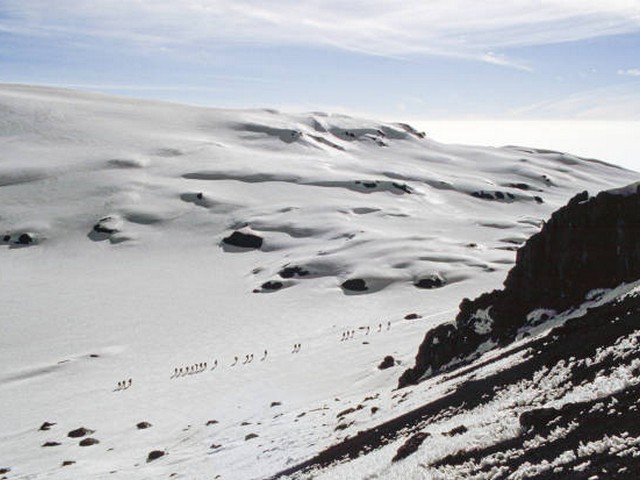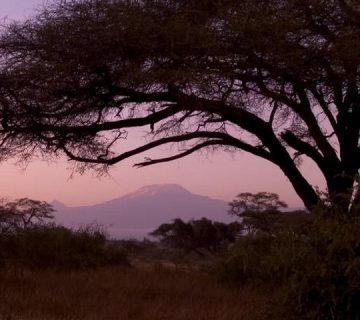How To Handle Altitude With Kids On Kilimanjaro
For many adventurers, climbing Mount Kilimanjaro is a transformative journey. When this journey includes children, the adventure takes on an even more significant meaning. At the Kilimanjaro Centre for Trekking and Ecotourism (KCTE), we believe that with proper preparation and care, your family can enjoy and conquer Kilimanjaro together. This post will guide you on how to handle altitude with kids on this majestic mountain, ensuring a safe, memorable, and inspirational ascent.
Understanding Altitude on Kilimanjaro
Mount Kilimanjaro stands as Africa's roof, towering at about 5,895 meters (19,341 feet) above sea level. Climbing this giant isn't just a physical challenge; it's an encounter with varying altitude levels, which can affect young climbers differently than adults. Understanding how altitude impacts the body will help you prepare your children for the climb effectively.
What Happens to the Body at High Altitude?
At higher elevations, the amount of oxygen in the air decreases, which can lead to altitude sickness. Symptoms include headache, nausea, dizziness, and fatigue. Children are not necessarily more susceptible to altitude sickness than adults, but their ability to communicate discomfort might be less precise, requiring vigilant observation from parents.
Preparing Kids for Kilimanjaro's Altitude
1. Start with a Check-Up
Before you even book your climb, consult with a pediatrician. Ensure your child is physically capable of handling high-altitude trekking.
2. Altitude Training
If possible, train on smaller mountains to help your child acclimatize to higher altitudes gradually. You can also practice hiking to build stamina and resilience.
3. Hydration is Key
Kids might not always recognize thirst. Encourage them to drink water regularly throughout the climb to help mitigate altitude sickness.
4. Nutritious Diet
A well-balanced diet rich in carbohydrates can help maintain energy levels in kids and adults alike. Pack snacks that your kids love and are also energy-boosting.
Climbing Kilimanjaro with Kids: Best Practices
1. Choose the Right Route
At KCTE, we recommend the Lemosho or Machame routes for families. These routes offer a gentler ascent and provide more days for acclimatization, which are crucial for children.
2. Go Slow
"Pole Pole" (slowly, slowly in Swahili) is the mantra on Kilimanjaro. A slower ascent increases acclimatization and decreases the risk of altitude sickness.
3. Regular Health Checks
Monitor your child's health throughout the climb. Look for any signs of altitude sickness and address them immediately with your guide's help.
4. Engage and Motivate
Keep the spirits high with games, stories, and songs. Engaging children's minds helps distract them from the physical strain and keeps morale high.
Safety Measures and Emergency Protocols
1. Experienced Guides
All our guides at KCTE are trained in wilderness first aid and carry emergency oxygen. They are experienced in assisting children and adults on the mountain.
2. Emergency Plans
KCTE plans every trek with meticulous attention to emergency response. We ensure that evacuation procedures are in place, should there be a need to descend rapidly.
Making the Summit a Family Memory
1. Celebrate Each Segment
Acknowledge and celebrate each stage of the climb. Reaching each campsite is an achievement that deserves celebration.
2. Capture the Moments
Take pictures or keep a journal. Documenting the journey will help keep the memories alive and motivate everyone through challenging segments.
3. Summit Together
When you finally reach the summit, it's a moment of triumph not just for the kids but the entire family. Celebrate this monumental achievement together.
FAQs About Climbing Kilimanjaro with Kids
How old should children be to climb Kilimanjaro?
At KCTE, we recommend that children be at least 10 years old, but maturity and physical readiness are also important factors.
What is the best time of year to climb Kilimanjaro with children?
The best times are during the dry seasons, January to mid-March and June to October, when the weather is most favorable.
Can altitude sickness be prevented?
While it can't be entirely prevented, its impact can be minimized through gradual acclimatization, proper hydration, and a slow climbing pace.
What should kids pack for Kilimanjaro?
Apart from regular climbing gear, pack comfort items like a favorite snack, book, or a small game. Warm clothing and sun protection are a must.
Why Choose KCTE for Your Family's Kilimanjaro Adventure?
At Kilimanjaro Centre for Trekking and Ecotourism, we don't just guide you to the top; we provide an enriching journey that your family will cherish forever. Our expert guides, child-friendly approach, and attention to safety, make us the best choice for families looking to tackle Kilimanjaro.
Ready to make unforgettable family memories atop Africa's highest peak? Book your Kilimanjaro adventure with KCTE today, and let us guide you and your little ones to the roof of Africa. Remember, the summit is just a step; the journey is what truly matters. Let's make each step count together!




